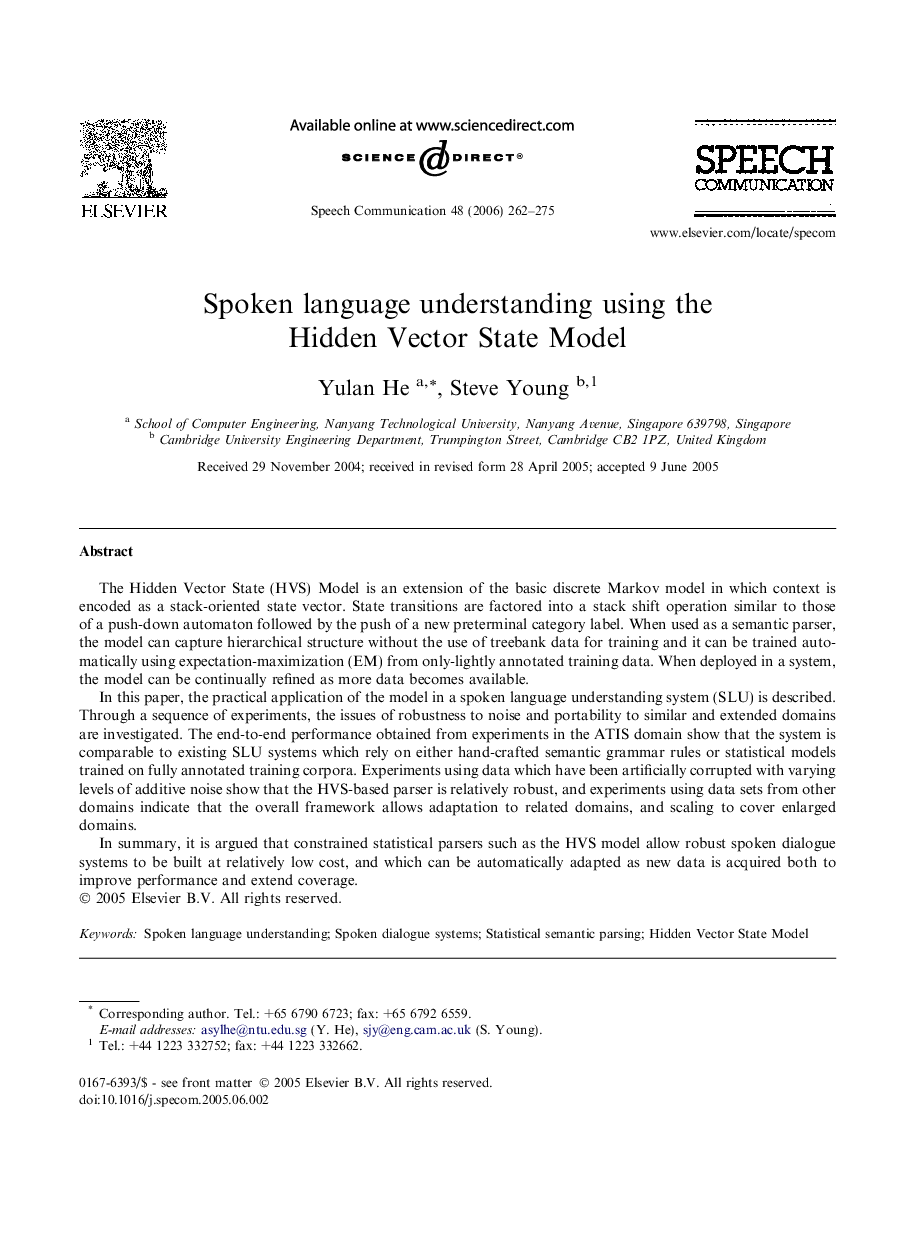| کد مقاله | کد نشریه | سال انتشار | مقاله انگلیسی | نسخه تمام متن |
|---|---|---|---|---|
| 569043 | 1452051 | 2006 | 14 صفحه PDF | دانلود رایگان |

The Hidden Vector State (HVS) Model is an extension of the basic discrete Markov model in which context is encoded as a stack-oriented state vector. State transitions are factored into a stack shift operation similar to those of a push-down automaton followed by the push of a new preterminal category label. When used as a semantic parser, the model can capture hierarchical structure without the use of treebank data for training and it can be trained automatically using expectation-maximization (EM) from only-lightly annotated training data. When deployed in a system, the model can be continually refined as more data becomes available.In this paper, the practical application of the model in a spoken language understanding system (SLU) is described. Through a sequence of experiments, the issues of robustness to noise and portability to similar and extended domains are investigated. The end-to-end performance obtained from experiments in the ATIS domain show that the system is comparable to existing SLU systems which rely on either hand-crafted semantic grammar rules or statistical models trained on fully annotated training corpora. Experiments using data which have been artificially corrupted with varying levels of additive noise show that the HVS-based parser is relatively robust, and experiments using data sets from other domains indicate that the overall framework allows adaptation to related domains, and scaling to cover enlarged domains.In summary, it is argued that constrained statistical parsers such as the HVS model allow robust spoken dialogue systems to be built at relatively low cost, and which can be automatically adapted as new data is acquired both to improve performance and extend coverage.
Journal: Speech Communication - Volume 48, Issues 3–4, March–April 2006, Pages 262–275